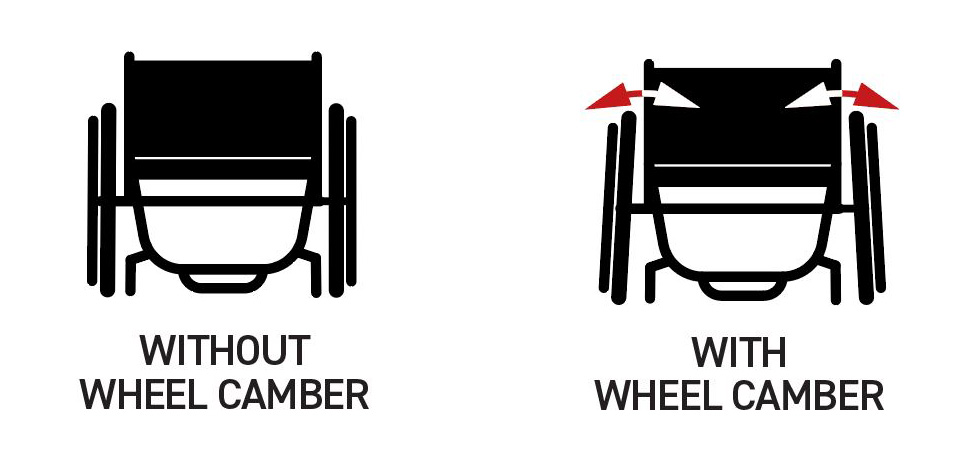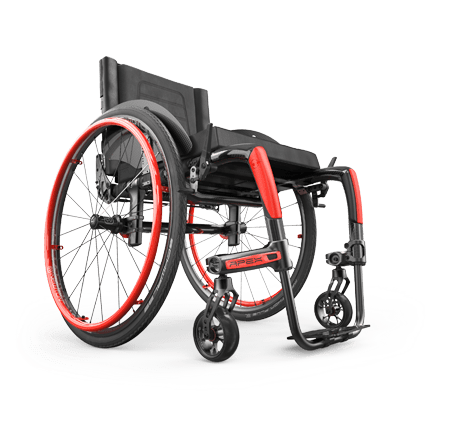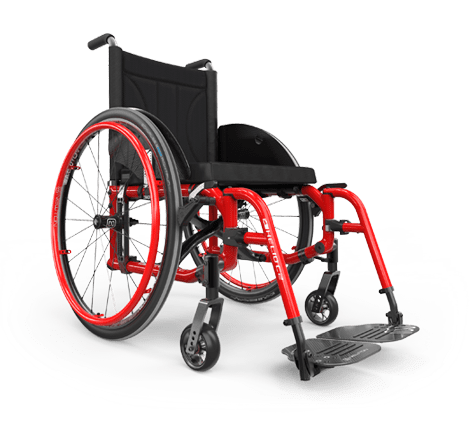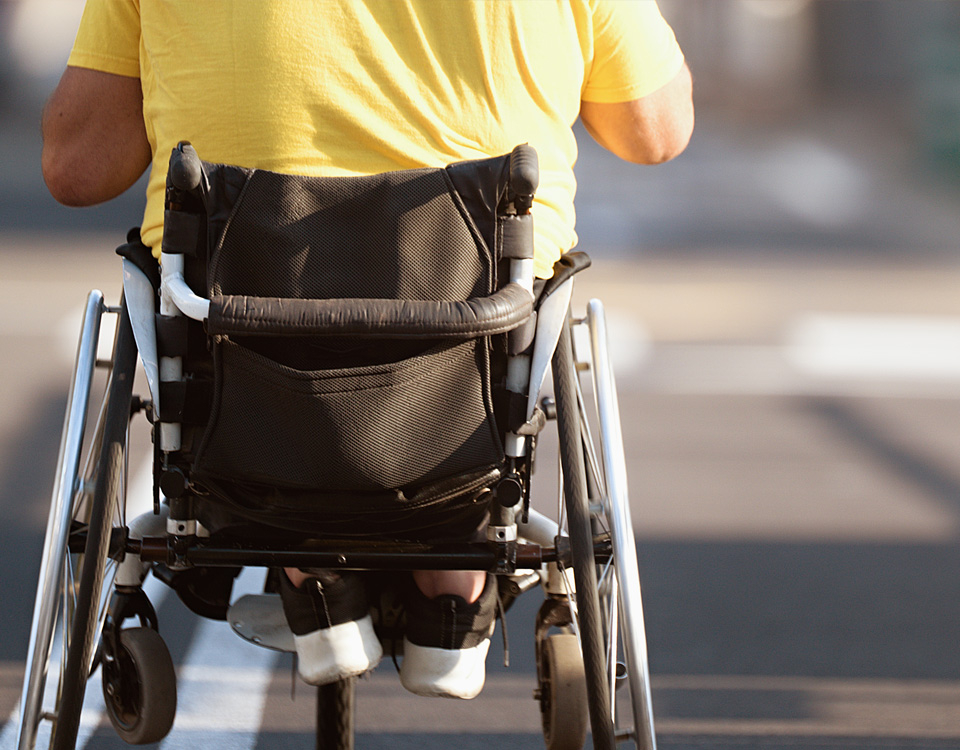Proper set-up pertaining to the rear wheels can involve, rear wheel and tire selection, horizontal and lateral position, spacing and camber. Today, we will take a closer look at camber. What it is, how it is applied to manual wheelchairs and some of the advantages and disadvantages for certain populations and environments.
What is Camber?
Camber is the measurement of the angle of a set of wheels in relation to the ground, or the angle of the wheel on the sagittal plane. When looking at the rear wheels on a wheelchair it is the angle of the wheels which brings the top of the wheels closer to the wheelchair. Camber is measured in degrees. The higher the number, more camber there is. If a wheel is perpendicular to the ground, the camber is zero. If the top of the wheel is angled in towards the wheelchair and the bottom of the wheel is further away, we know there is a certain amount of camber applied to the wheel. Common degrees of camber on a manual wheelchair range from 0° to 8° with the most common selections for an everyday wheelchair ranging from 0-3°. Camber in sport wheelchairs can be upwards of 15°, or even more.

Depending on the wheelchair there are different ways camber is applied, if it can be applied at all. Basic standard wheelchairs may not allow for camber of the rear wheels, and this should be taken in consideration when selecting a mobility base. With customizable foldable wheelchairs camber is most often accomplished through the axle plate or axle receiver and on rigid wheelchairs camber is applied through the plugs that insert into the camber tube. It is also important to look into if camber can be changed once selected. Most changes to camber will require tools and possibly new parts.
Advantages of Camber
There are mechanical and environmental advantages to having camber on a manual wheelchair, this can include:
- As camber is increased, the width of the wheelchair across the bottom increases; this adds lateral stability by increasing the wheelchairs footprint. This is useful when navigating lateral slopes or when frequent sideways movements are occurring such as with active users or in wheelchair sports.
- With this wider base of the wheelchair fingers and hands are protected when navigating through tight spaces as the lower part of the wheel will hit an obstacle, not the top where the hands are naturally positioned, therefore protecting the hands.
- When looking at body mechanics, adding camber to the rear wheels places the hand rim closer to the user’s body. This can decrease shoulder abduction therefore decreasing shoulder strain during propulsion. The hand rim is also placed in a better position for a more natural push stroke allowing you to push down and out providing improved body mechanics.
- In pediatrics it allows for better access to the wheels and ease of maneuverability. Especially turning, which may be difficult for young self-propellers.
- Makes turning quicker and increases acceleration.
- Camber redirects forces coming up through the wheelchair from the environment making the ride less bumpy.
- Aesthetically, cambered wheels provide a sportier look to the wheelchair, which some may find an added advantage as they look to customize their wheelchair to their preferences.
Disadvantages of Camber
As we know, every change we make has a cost-benefit. When selecting camber, you also need to be aware of the potential drawbacks
- Increases the overall width by approximately 1” (2.54 cm) for every 2 degrees of camber.
- Excessive camber may cause the wheels to rub against the armrest, sideguards, or the user.
- May cause uneven tire wear and reduce traction.
Camber is one simple way to customize a wheelchair to allow for many mechanical and environmental advantages for a wheelchair user. If the disadvantages do not restrict the user camber can be a small detail that can increase performance, ensure user satisfaction and increased independence for the lifetime of the wheelchair.
References
- Huang, Y., Guo, L., Tsai, C., & Su, F. (2007). Effect Of Wheel Camber On Mechanical Energy And Power Flow Analysis Of The Upper Extremity In Wheelchair Propulsion. Journal of Biomechanics,40. doi:10.1016/s0021-9290(07)70460-8
- Mason, B., Van Der Woude, L., De Groot, S., & Goosey-Tolfrey, V. (2011). Effects of Camber on the Ergonomics of Propulsion in Wheelchair Athletes. Medicine & Science in Sports & Exercise, 43(2), 319–326. https://doi.org/10.1249/MSS.0b013e3181edf973
- Rozendal, R. (1989). The effect of rear wheel camber in manual wheelchair propulsion. Journal of Rehabilitation Research and Development, 26(2), 37–46. http://search.proquest.com/docview/215290191/
- Trudel G, Kirby RL, Ackroyd-Stolarz SA, Kirkland S. Effects of rear-wheel camber on wheelchair stability. Arch Phys Med Rehabil. 1997;78(1):78–81.
- Tsai, C., Lin, C., Huang, Y., Lin, P., & Su, F. (2012). The effects of rear-wheel camber on the kinematics of upper extremity during wheelchair propulsion. BioMedical Engineering OnLine,11(1), 87.
- Tsai, C., Lin, P., Lin, C., Wang, L., Su, F., & Huang, Y. (2007). Effects Of Camber On Pushrim Force During Wheelchair Propulsion. Journal of Biomechanics,40.









